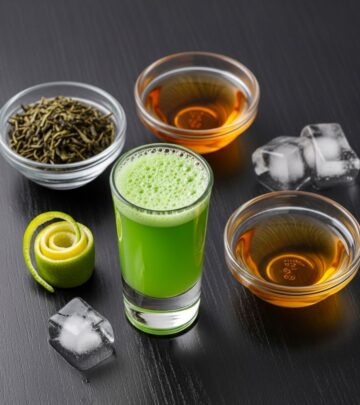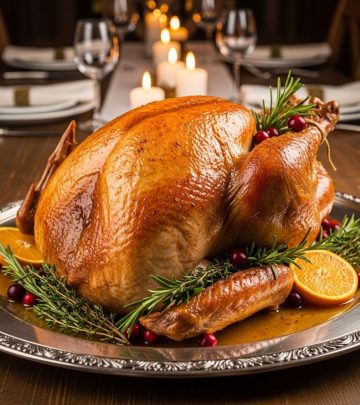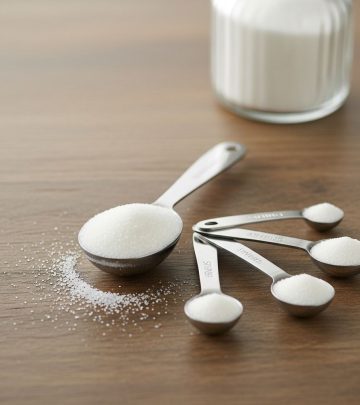Mexican Coffee: Rich Traditions, Unique Flavors, and Inspiring Brews
Explore the origins, regional varieties, complex flavors, and creative recipes that make Mexican coffee an unforgettable experience.

Mexican Coffee: Origins, Flavors, and Brewing Creativity
Mexican coffee boasts a distinguished reputation among coffee connoisseurs due to its nuanced flavors and the rich cultural traditions that surround its production and consumption. From the sun-drenched mountains of Chiapas to the misty highlands of Oaxaca and the lush valleys of Veracruz, Mexico produces coffees that captivate with their delicacy, aromatic complexity, and versatility in recipes. This guide explores the legacy of Mexican coffee, the signature beans from different regions, common brewing methods, and how to make a classic Mexican coffee drink at home.
The Heritage: Why Mexican Coffee Is Unique
Mexican coffee stands out among global varieties thanks to a combination of factors:
- Diverse Growing Regions: Southern mountainous states like Chiapas, Oaxaca, Veracruz, Puebla, and Guerrero provide varied terroirs, from volcanic soil to humid highlands, each imparting unique flavors and aromas to the beans.
- Distinct Flavor Profiles: Mexican coffees range from light and nutty, with hints of citrus and chocolate, to sweet and toasted, with undertones of caramel and fruit.
- Traditional Farming Methods: Many growers use shade-grown practices and sustainable, hand-picked harvests, particularly with prized beans like Oaxaca Pluma.
- Washed Processing: Most Mexican coffees are processed using the ”washed” method, which ensures clarity and preserves delicate flavors.
Major Coffee Regions of Mexico: Signature Beans & Flavors
| Region | Signature Beans | Flavor Profile |
|---|---|---|
| Chiapas | Café de Altura | Round body, notes of nuts, citrus, lemon, chocolate; mild acidity, well-balanced, smooth, hazelnut undertones. |
| Oaxaca | Pluma Hidalgo (Oaxaca Pluma) | Light to medium body, bright acidity, citrus and floral notes; nutty, caramel, and maple undertones; sweet and toasted. |
| Veracruz | Altura Coatepec | Medium-bodied, moderate acidity, floral and nutty notes; smooth finish, rich aroma. |
| Puebla | Multiple highland varietals | Medium body, pronounced acidity, chocolate and fruity notes, medium intensity. |
| Guerrero | Atoyac | Full-bodied, berry-like fruitiness, spicy and floral notes, sweet, strong chocolate aroma. |
Each region’s unique terroir—a blend of altitude, soil, rainfall, and temperature—directly influences bean aroma and taste. Premium beans are typically grown at higher elevations, which promote more complex flavors and balanced acidity.
What Makes Mexican Coffee Stand Out
- Light Body & Delicate Acidity: Most Mexican coffee is known for a mellow mouthfeel and clean, brisk acidity.
- Nutty & Chocolaty Flavors: Predominant notes of toasted nuts, milk or dark chocolate, and subtle spices are hallmarks of Mexican coffee.
- Sweetness & Fruitiness: Hints of brown sugar, caramel, maple, berry, and orchard fruit are often present, making these coffees approachable and balanced.
- Dry Finish: Many Mexican coffees finish with a pleasant dryness, sometimes likened to a fine white wine.
These qualities grant Mexican coffee wide appeal, both for drinking straight and blending into creative recipes.
Classic Mexican Coffee Drinks: Café de Olla and Upgraded Variations
What Is Café de Olla?
Café de Olla is Mexico’s traditional coffee drink, usually brewed in a clay pot (”olla”) that imparts mineral complexity to the beverage. The core elements include freshly ground coffee, raw piloncillo (unrefined cane sugar), cinnamon sticks, and optional spices.Making café de olla is both a comforting ritual and a celebration of Mexico’s culinary heritage.
Café de Olla: Authentic Mexican Coffee Recipe
- Ingredients:
- 4 cups water
- 1/3 cup coarsely ground Mexican coffee (Chiapas, Oaxaca, or Veracruz recommended)
- 2–3 oz piloncillo (or dark brown sugar)
- 1–2 cinnamon sticks
- Optional: cloves, star anise, orange zest
- Instructions:
- Combine water, piloncillo, and cinnamon in a saucepan; bring to a simmer.
- Stir until sugar dissolves, add spices if using.
- Remove from heat, add coffee grounds. Steep (covered) 5–10 minutes.
- Strain into mugs and enjoy!
This method enhances the natural sweetness and spice of Mexican beans, creating a warming drink perfect for breakfast or dessert.
Modern Mexican Coffee Variations
- Mexican Spiced Coffee: Brew with added spices (cinnamon, cloves, allspice) and top with whipped cream and a sprinkle of cayenne.
- Mexican Mocha: Mix espresso or strong coffee with chocolate syrup, cinnamon, and steamed milk for a rich, spicy latte.
- Iced Mexican Coffee: Brew strong coffee and cool; pour over ice and add sweetened condensed milk, cinnamon, and nutmeg for a refreshing twist.
- Spiked Mexican Coffee: For an adults-only treat, stir in coffee liqueur or tequila and top with whipped cream.
Tips for Selecting and Brewing Mexican Coffee
- Choose Single-Origin Beans: Opt for beans labeled with their specific region (Chiapas, Oaxaca, Veracruz, etc.) for pure and distinctive flavor.
- Grind Fresh: Whole beans ground just before brewing yield the most aromatic, flavorful cup.
- Brew Methods: French press, pour-over, and drip brewing all highlight Mexican coffee’s delicate nuances. Using a clay pot (olla) is traditional for café de olla.
- Store Properly: Keep beans in a cool, airtight container to preserve their subtle aromas.
- Experiment With Additions: Enhance the natural flavors by pairing Mexican coffee with cinnamon, vanilla, citrus peels, or chocolate shavings.
The Role of Coffee in Mexican Culture
Coffee is deeply woven into Mexican daily life, rural and urban alike. In the southern highlands, coffee ceremonies and communal brewing remain important social rituals. For many families, morning café de olla is a cherished tradition, symbolizing hospitality and warmth.
- Small-Scale Farming: Most Mexican coffee is produced by independent farmers using time-honored methods. Organic and shade-grown beans are common, supporting environmental health.
- Community Connection: Coffee farms often operate as family businesses, passing down knowledge through generations and maintaining links to indigenous practices.
- Artisan Roasting: Traditional drum roasting preserves balanced body and subtle complexity, distinguishing Mexican coffee in global markets.
- Global Recognition: Beans such as Café Pluma from Oaxaca have earned international acclaim and even denominations of origin protection.
Mexican Coffee vs. Other Global Coffees
| Feature | Mexican Coffee | Colombian Coffee | Ethiopian Coffee |
|---|---|---|---|
| Body | Light to medium | Medium to full | Light to medium |
| Flavor Notes | Nutty, chocolate, citrus, caramel, spice | Chocolate, fruity, caramel | Berry, floral, wine-like |
| Acidity | Delicate, crisp | Bright, pronounced | Vibrant, tangy |
| Finish | Dry, clean | Lingering sweetness | Complex, juicy |
While Colombian and Ethiopian coffees are celebrated for their strong fruitiness and bold acidity, Mexican coffees are prized for their subtle, approachable profiles and harmonious integration of nut, spice, and gentle sweetness.
Frequently Asked Questions (FAQs)
Q: How does the flavor profile of Mexican coffee differ from other popular coffee varieties?
A: Mexican coffee is typically light-bodied and nutty with smooth notes of chocolate and citrus, and sometimes dry, wine-like acidity. The precise flavors depend on the bean’s regional origin, but Mexican varieties are prized for their balanced, delicate character and slight sweetness, distinguishing them from more robust African or South American coffees.
Q: What are the defining characteristics of Chiapas, Oaxaca, and Veracruz coffee beans?
A: Chiapas beans give a smooth, well-balanced cup with nutty, chocolate, and citrus notes; Oaxaca (especially Pluma Hidalgo) features light to medium body, caramel, and floral notes; Veracruz produces moderately acidic, medium-bodied coffee with floral, nutty flavors and a smooth finish.
Q: Can I make authentic Mexican coffee without piloncillo?
A: Yes, dark brown sugar can be substituted for piloncillo in Café de Olla recipes, providing a similar depth and molasses flavor to complement coffee and spices.
Q: What is the best brewing method for Mexican coffee?
A: Traditional Café de Olla is brewed in a clay pot, but French press, pour-over, and standard drip brewing all yield excellent results. The key is starting with fresh, coarsely ground single-origin beans.
Q: Are Mexican coffees suitable for espresso?
A: Yes, the nutty, chocolaty, and slightly sweet profiles of Mexican beans make them excellent for espresso, especially when seeking subtlety over boldness. They’re also favored for espresso-based drinks like Mexican mochas.
Tips for Serving and Pairing Mexican Coffee
- Pair with traditional Mexican pastries like pan dulce or churros for a complete experience.
- For desserts, serve with chocolate cake, cinnamon cookies, or fruit breads to echo coffee’s nuanced flavors.
- Add a cinnamon stick or splash of vanilla extract for aromatic enhancement.
- Offer iced Mexican coffee in warm weather for a refreshing, sweet treat.
Inspiration from the Mexican Coffee Culture
Mexican coffee is not just a beverage—it’s an expression of Mexico’s passionate commitment to flavor, sustainability, and tradition. Whether brewed into café de olla, enjoyed as a simple cup, or crafted in inventive recipes, its rich taste and warm heritage make every sip a celebration.
References
- https://www.ictcoffee.com/news/a-sippers-guide-to-discovering-mexican-coffee/
- https://www.tastingtable.com/1757866/mexican-coffee-beans-ultimate-guide/
- https://www.javapresse.com/blogs/enjoying-coffee/the-rich-aromas-of-mexico-a-comprehensive-guide-to-mexican-coffee
- https://killercoffeebeans.com/blogs/coffee-blog/all-you-need-to-know-about-mexican-coffee
- https://www.drivencoffee.com/blogs/blog/mexican-coffee-origins
- https://lolomercadito.com/blogs/news/mexican-coffee-what-makes-it-so-special
- https://burmancoffee.com/product-category/origin/central-america/mexico/
- https://www.mysticmonkcoffee.com/blogs/learn-about-coffee/mexican-coffee
- https://www.tea-and-coffee.com/mexican-coffee












